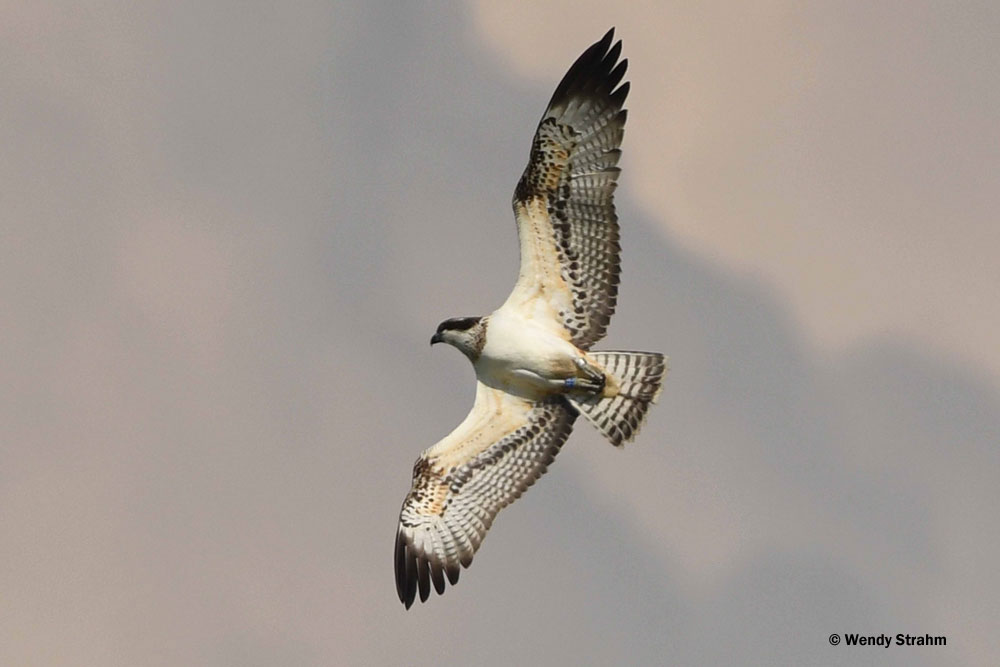The winner of the “last to leave” contest this year is Amphore (F30), a young female from Germany named after the vase-like design on the back of her head. After days of observing her just lying about and only moving when feeding, we realised that (very fittingly) “Amphore” is an anagram for “Amorphe” (French for “passive”)! However, her seemingly “laziness” was just because she was the youngest of the German birds. She soon became more active, growing up to become a beautiful strong female (see photo, taken the day before she migrated). On September 17, a bright day with a strong north-easterly “bise” wind, she circled up high towards the Lake of Neuchâtel and disappeared over the horizon, bringing to an end our 2020 season.
The first to migrate had been Zeppelin (F26) on August 15 and Olympe (F28) on the 25th. Then six more left in the first four days of September: Méandre (F25), Volcan (F31), Tonnerre (F32), Jedi (F35), Tulipe (F36) and Gustave (F27), soon followed by Racine (F29) on September 7. And then there were three. Who seemed to bond and be in no hurry to leave, happily enjoying the Indian summer at Bellechasse. The two youngest Norwegians, Rugby (F33) and Silex (F34), finally migrated on September 15 and 16 respectively, with Amphore leaving the day after.
As for the two confirmed male returnees of this year, Arthur (F12, born in 2018) migrated on September 1 and Taurus (PS7, born in 2017) on September 4. In addition, David Meyer, who discovered Mouche (PR4, born in 2016) in Moselle and monitored her first breeding attempt, tells us that she and her mate spent the summer there and were last seen together on September 1.
So a globally positive season, even if despite our best efforts, we again did not succeed in releasing many more males than females this year. The reason why we hoped to reintroduce a larger proportion of males is because, being more philopatric, they traditionally return to the area where they fledged, which is much less often the case with females. While we still await confirmation from the DNA analysis later this autumn, it seems that this year we have released seven males and five females.
As the season draws to a close, once again a big thank you to the Osprey project team for their dedication and enthusiasm in taking great care of the birds, and ensuring their safe departure to destinations unknown.



